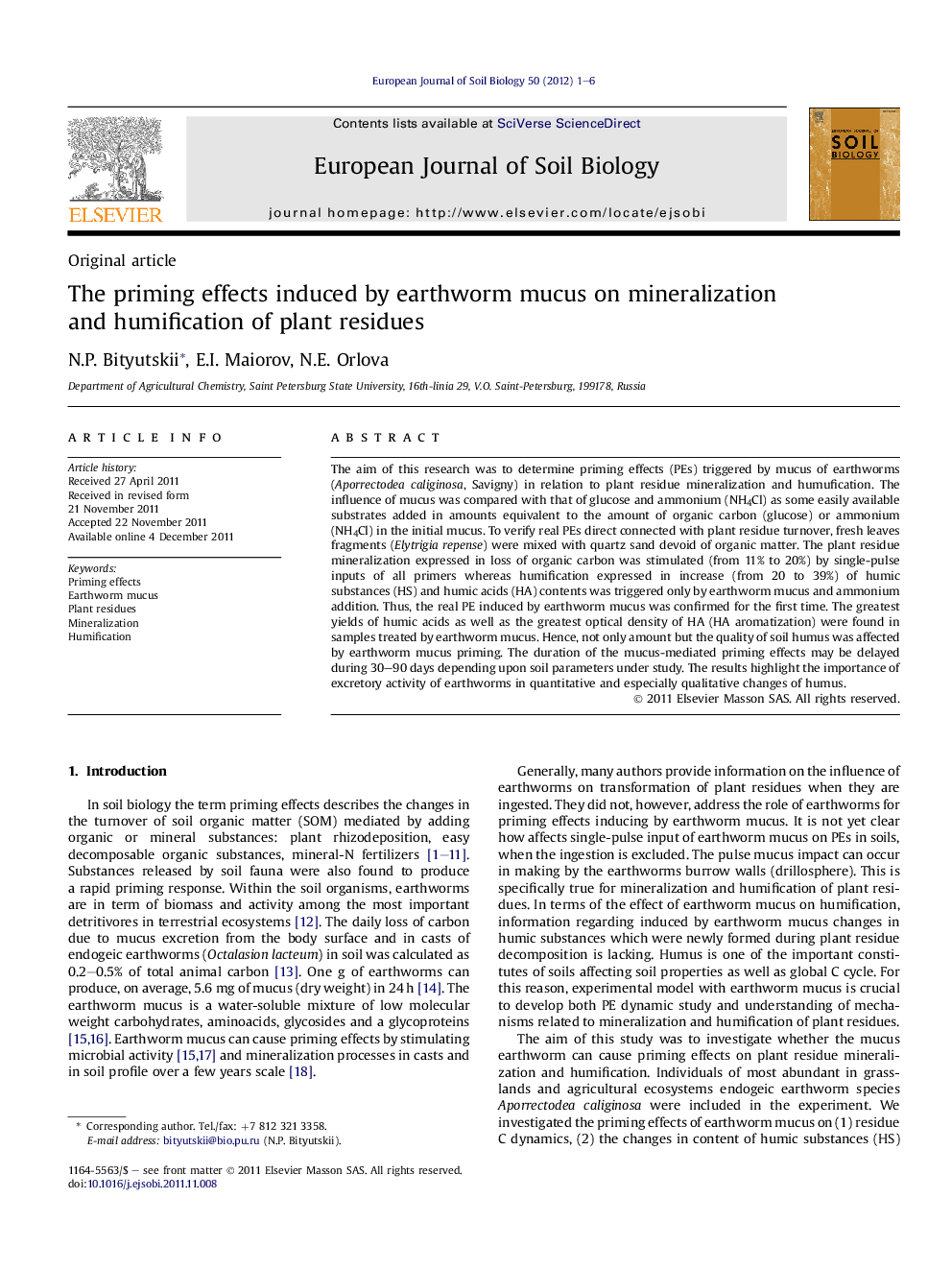| Article ID | Journal | Published Year | Pages | File Type |
|---|---|---|---|---|
| 4392019 | European Journal of Soil Biology | 2012 | 6 Pages |
The aim of this research was to determine priming effects (PEs) triggered by mucus of earthworms (Aporrectodea caliginosa, Savigny) in relation to plant residue mineralization and humufication. The influence of mucus was compared with that of glucose and ammonium (NH4Cl) as some easily available substrates added in amounts equivalent to the amount of organic carbon (glucose) or ammonium (NH4Cl) in the initial mucus. To verify real PEs direct connected with plant residue turnover, fresh leaves fragments (Elytrigia repense) were mixed with quartz sand devoid of organic matter. The plant residue mineralization expressed in loss of organic carbon was stimulated (from 11% to 20%) by single-pulse inputs of all primers whereas humification expressed in increase (from 20 to 39%) of humic substances (HS) and humic acids (HA) contents was triggered only by earthworm mucus and ammonium addition. Thus, the real PE induced by earthworm mucus was confirmed for the first time. The greatest yields of humic acids as well as the greatest optical density of HA (HA aromatization) were found in samples treated by earthworm mucus. Hence, not only amount but the quality of soil humus was affected by earthworm mucus priming. The duration of the mucus-mediated priming effects may be delayed during 30–90 days depending upon soil parameters under study. The results highlight the importance of excretory activity of earthworms in quantitative and especially qualitative changes of humus.
Graphical abstractFigure optionsDownload full-size imageDownload as PowerPoint slideHighlights► We verify priming effects induced by earthworm mucus. ► Single-pulse inputs of mucus induced increase in plant residue mineralization. ► Not only amount but the quality of humus was affected by mucus induced priming.
